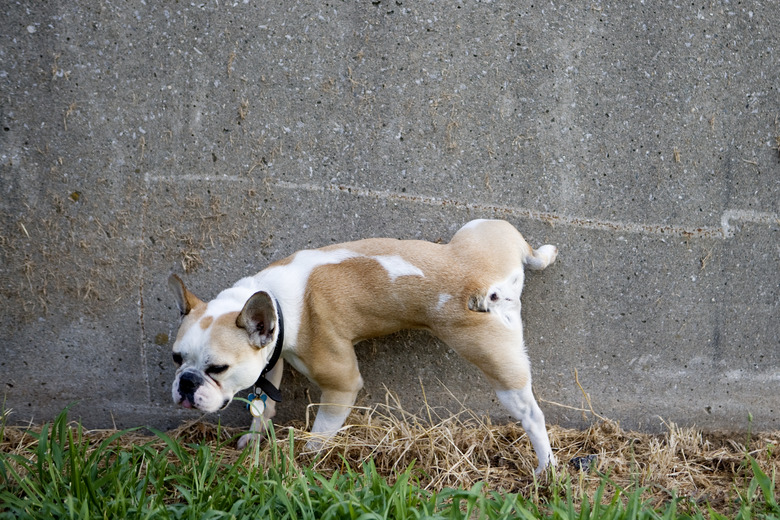How To Stop Your Dog From Urinating On Concrete
Imagine this: You've just cleaned and stained your concrete front patio and you take a step outside with your canine in tow when she pees all over it, leaving a puddle all over your handiwork. Even if you don't need to stop your dog from peeing on a patio, you may wish she wouldn't pee on concrete sidewalks or the corners of buildings while on your daily walks. Training a dog to go outside rather than in your home is what every dog guardian strives for, and if you wish to encourage your dog to go in preferred spots, like grass, it can be done with a bit of focus and practice.
Positive reinforcement pee training
Positive reinforcement pee training
Positive reinforcement training is an effective, reward-based training style that allows dogs to associate positive reactions with desired behaviors. Positive reinforcement training is often used to teach dogs basic commands, like "sit" and "off," as well as leash training on walks, by redirecting their focus from their surroundings back to you. This training style is also often used when dogs are learning to be potty trained to use the bathroom outdoors, and can be implemented to teach a dog to eliminate in a specific spot.
To use positive reinforcement training to stop your dog from urinating on concrete patios, walkways, or door stops, the American Kennel Club suggests finding a reward that your dog will consider to have high value, like small bits of a hot dog. Next, offer your dog the reward only when he exhibits the exact behavior you're working toward — in this case, peeing in the yard over the concrete. Each time your dog pees in the grass, or other designated area you prefer, offer the reward to help him associate peeing in grass with a tasty treat. Finally, positive reward is called positive for a reason, it discourages the use of punishment or withholding to train a dog, so do your best to resist scolding your dog for peeing on concrete, and instead praise him for doing what you prefer.
Teaching incontinent dogs
Teaching incontinent dogs
In some cases, it may be hard to stop a dog from peeing on the patio because they are, quite simply, incapable of holding it until they reach greener pastures. Young puppies often struggle to even make it to the door, let alone several paces to the yard or a patch of grass that skirts the street. Older dogs can sometimes struggle with this too, as do dogs with underlying medical issues that may result in frequent urination, like a bladder infection, kidney disease, or diabetes, says VCA Hospitals. To make things easier on dogs who struggle to hold it, try increasing the number of times they go out, and do your best to time bathroom breaks to coincide with when they tend to drink more water, like after meals or a long walk.
Peeing in the city
Peeing in the city
Sometimes, a concrete sidewalk is just about the only option for a canine to relieve herself, which is the case for dogs who live in cities and densely populated neighborhoods that don't feature grass lawns. While you can't exactly expect a dog to go where there is no grass, there are areas you can train her to eliminate that won't force people to step over or rinse away with a hose. One option is to train your dog to go along the edge of the street, which should be done on leash and with extreme care and caution for passing cars and bikes.
